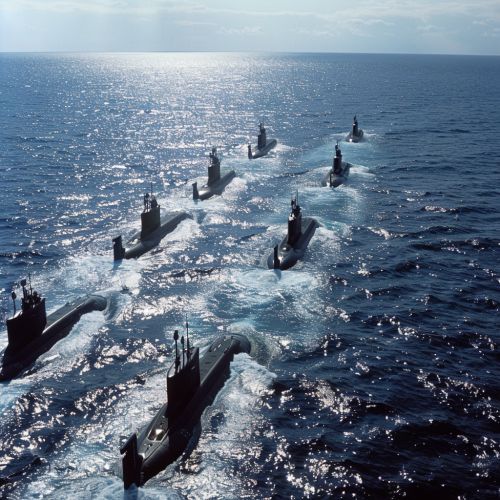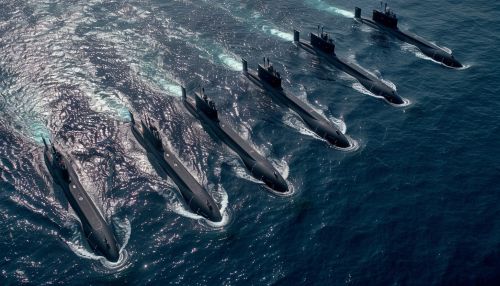Wolfpack (naval tactic)
Introduction
The naval tactic known as the "wolfpack" was a significant development in submarine warfare during World War II. Named after the hunting strategy employed by wolves, this tactic involved a group of submarines attacking a single target, typically a convoy of ships. This approach was a departure from the traditional method of single submarine attacks and required a high level of coordination and communication among the submarines in the wolfpack.
Origins
The wolfpack tactic originated in the German Navy during World War II. The German term for this strategy was "Rudeltaktik", which directly translates to "pack tactic". The idea was conceived by Admiral Karl Dönitz, who was the commander of the German U-boat fleet at the time. Dönitz believed that by attacking in groups, submarines could overcome the defenses of a convoy and inflict significant damage.
Execution
The execution of the wolfpack tactic required precise coordination and communication. A typical wolfpack consisted of 5 to 10 submarines, which would spread out in a long line across the projected course of a convoy. When one submarine spotted a convoy, it would signal the other submarines in the wolfpack and begin to shadow the convoy, waiting for the others to arrive. Once the wolfpack was assembled, the submarines would attack simultaneously, causing chaos and confusion among the convoy's defenses.
Effectiveness
The effectiveness of the wolfpack tactic was a subject of much debate. On one hand, it allowed submarines to overcome the defenses of a convoy and inflict significant damage. On the other hand, the tactic required a high level of coordination and communication, which was difficult to achieve in the heat of battle. Furthermore, the tactic was highly dependent on the skill and experience of the submarine commanders.


Countermeasures
The Allies developed several countermeasures to combat the wolfpack tactic. One of the most effective was the use of escort carriers, which provided air cover for convoys. The aircraft from these carriers could spot submarines on the surface and attack them with depth charges. Another countermeasure was the use of sonar, which allowed escort ships to detect submarines underwater and attack them before they could get close to the convoy.
Legacy
Despite its challenges, the wolfpack tactic left a lasting legacy on naval warfare. It demonstrated the potential of coordinated submarine attacks and influenced the development of post-war submarine tactics. Today, the term "wolfpack" is often used to refer to any group of submarines operating together in a coordinated manner.
